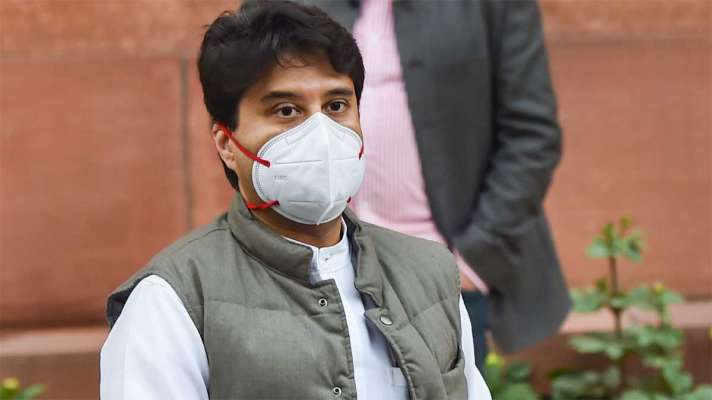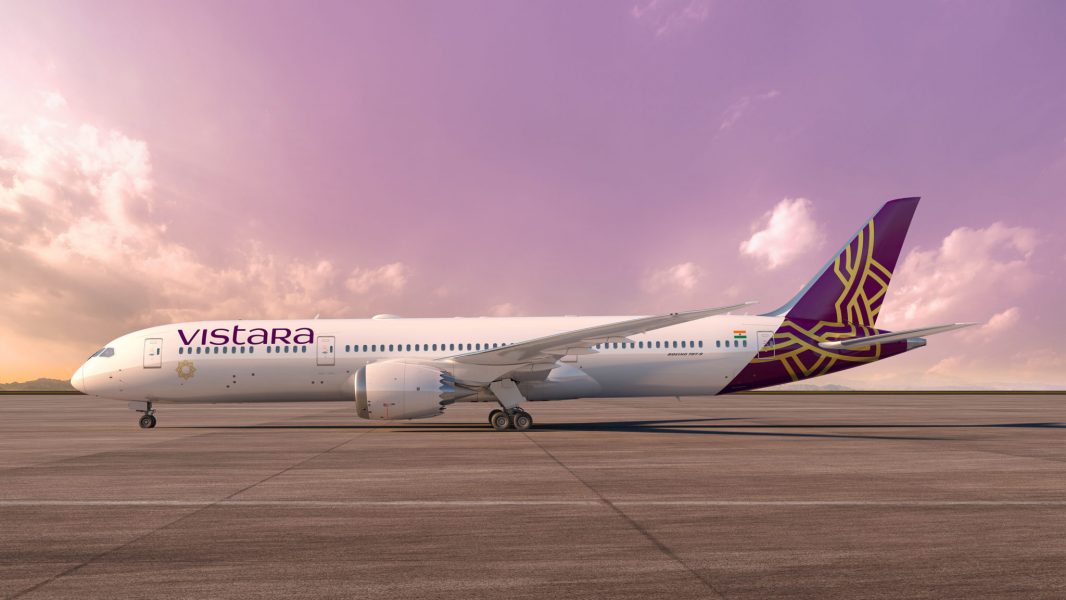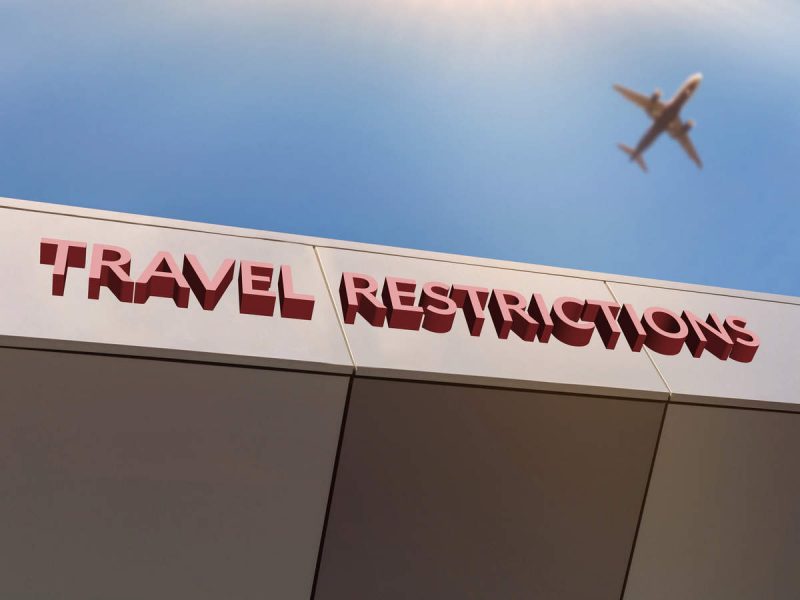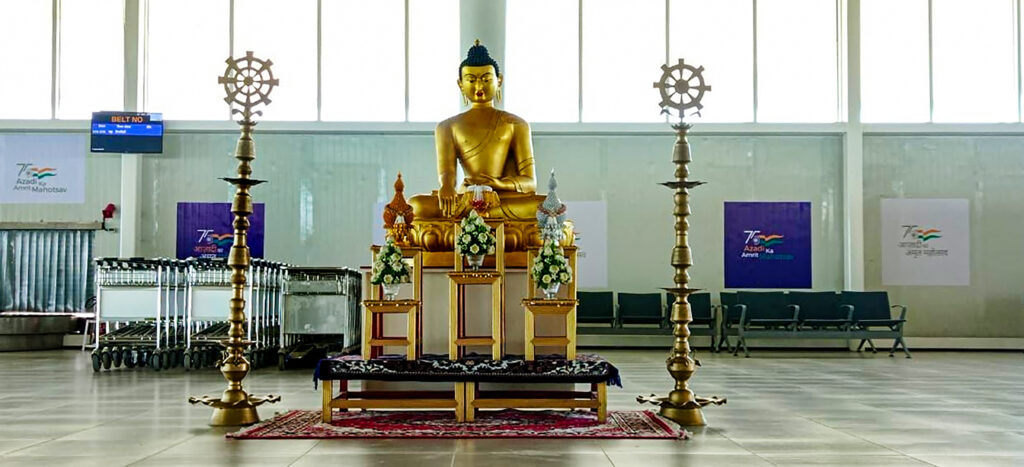The Indian civil aviation watchdog hustles up and gets ready for an audit of the country's air safety mechanism, possibly by next week.
According to officials, the team from FAA, who is likely to land here either today or tomorrow, will commence the process next week starting October 25.
How crucial is this audit for Indian's aviation sector? A brief history
Asia Financial
In addition to the FAA, UN's aviation arm- ICAO, has also been conducting audits to evaluate India's air safety readiness.
Earlier, the ICAO had carried out the Universal Safety Oversight Audit Programme for India in November 2017, followed by a second one in February 2018. The results were quite depressing as it showed the country's rankings drop to 57.44 per cent from 65.82 per cent earlier, placing India below Pakistan, Nepal and many other nations.DGCA was quick to take stock of the situation following which, the scores improved to 74.
These audits also put forward the proposal asking DGCA to be the licensing authority for ATC officers- a task formerly handled by the AAI.
Primary areas of focus
Primary and civil aviation legislationCivil aviation organizationPersonnel licensing and trainingAircraft operations and airworthiness
The importance of good audit scores cannot be emphasised enough as international expansion plans are profoundly impacted by this.
India was placed on the list of 13 worst performing nations in the ICAO audit of 2012. The country's rankings were downgraded further in an audit conducted by the FAA in 2014- a lack of adequate regulatory foresight quoted as being the reason.
Indian operators were barred from signing commercial contracts with US airlines or adding new routes to the US during this period. However, the ratings were restored the following year.
The next round of audit to be conducted by ICAO is expected sometime in 2022.
Also to be noted, the last audit conducted by the FAA was in 2018 wherein it had raised concerns about regulatory and guidance materials. The DGCA, again, was quick to spring into action post which the FAA granted the highest aviation safety ranking of Category 1 for India.
COVER: PennyStocks.News
Read next
A federal grand jury indicted a Boeing pilot who was involved in testing the 737 Max jetliner on Thursday, October 21 on charges of deceiving safety regulators who were evaluating the plane, which was later involved in two deadly crashes.
Mark Forkner, 49, was charged with obstructing the ability to protect airline passengers and leaving "pilots in the lurch" by a grand jury in Texas, according to the US Justice Department.
Mark A Forkner is accused of giving the Federal Aviation Administration false and incomplete information about an automated flight-control system that was involved in the crashes that killed 346 people, according to the indictment.
The Maneuvering Characteristics Augmentation System (MCAS) is a flight stabilizing program developed by Boeing which became notorious for its role in two fatal accidents of the 737 MAX, which killed all 346 people on board. MCAS was first used on Boeing KC-46 Pegasus military air tanker to balance fuel loads, but the aircraft, which was based on the Boeing 767, allowed pilots to assume control of the aircraft.
The Boeing MAX MCAS system (Image Courtesy - New Florence. New Renaissance.)
Prosecutors claim that because regulators failed to publish a key document with references to MCAS, pilot training manuals did not mention it, and Boeing customers were given incomplete information when purchasing planes.
The MCAS, a software feature that automatically lowers the plane's nose in certain conditions, was linked to two fatal 737 Max crashes in five months, prompting the Federal Aviation Administration (FAA) to ground the plane for 19 months, which was lifted in November 2020.
The system was not mentioned in critical FAA documents, pilot manuals, or pilot-training material supplied to airlines, according to prosecutors, because of Forkner's "alleged deception."
The flight-control system automatically pushed down the noses of Max jets that crashed in 2018 in Indonesia, and 2019 in Ethiopia. The pilots tried unsuccessfully to regain control, but both planes went into nosedives minutes after taking off.
Forkner was charged with two counts of fraud involving aircraft parts in interstate commerce and four counts of wire fraud. Federal prosecutors said he was expected to make his first appearance in court on Friday in Fort Worth, Texas.
Ethiopian Airlines' B737 Max crashed after six minutes after takeoff, killing all 157 people aboard. (Image Courtesy - BBC)
Mr Forkner was accused by prosecutors of "scheming to defraud Boeing's US-based airline customers to obtain tens of millions of dollars" for the company.
Until after the first crash, most pilots were unaware of the system, known as the manoeuvring characteristics augmentation system.
The Max was designed to be a more fuel-efficient version of the venerable 737 that could compete with a plane developed by Airbus, Boeing's European competitor. Despite a tendency for the nose to tilt upward in some circumstances, the flight-control system was designed to make the Max fly like the previous 737s.
Congressional investigators have suggested that Forkner and Boeing downplayed the power of the system to avoid a requirement that pilots undergo extensive and expensive retraining, which would increase airlines’ costs to operate the plane.
Lion Air's B737 Max crashed into the Java Sea 13 minutes after takeoff, killing all 189 passengers and crew. (Image Courtesy - Condé Nast Traveller India)
Chad Meacham, acting US attorney for the northern district of Texas, said Forkner had tried to save Boeing money by withholding “critical information” from regulators.“His callous choice to mislead the FAA hampered the agency’s ability to protect the flying public and left pilots in the lurch, lacking information about certain 737 Max flight controls,” Meacham said in a statement.
Chicago-based Boeing agreed to a $2.5bn settlement to end a justice department criminal investigation into the company’s actions. Boeing said in the settlement last year that employees had misled regulators about the safety of the Max. The settlement included a fine, money for airlines that bought the plane and compensation for families of the passengers who died in the crashes.
Dozens of families of passengers are suing Boeing in federal court in Chicago.
A lawyer for the victims' relatives said Mr Forkner had not acted alone.
Following the fatal crashes, investigations found a flaw in an automated flight control system called the Maneuvering Characteristics Augmentation System (MCAS).
Mark A Forkner, Ex- Boeing 737 Max Chief Technical Pilot (Image Courtesy - WFAA.com)
Mr Forkner allegedly provided regulators with "false, inaccurate, and incomplete information" about MCAS.
"In an attempt to save Boeing money, [Mr] Forkner allegedly withheld critical information from regulators," said Chad Meacham, acting US attorney for Northern Texas. "His callous choice to mislead the FAA hampered the agency's ability to protect the flying public and left pilots in the lurch, lacking information about certain 737 Max flight controls."
In both cases an automated flight control system activated at the wrong time, overriding the actions of the pilots and forcing the aircraft into a dive.
It was later revealed that during the development of the aircraft, Mr Forkner sent messages to other Boeing employees claiming that it had been "designed by clowns, who in turn are supervised by monkeys".
He also boasted of using a "Jedi mind trick" to persuade regulators not to impose onerous training requirements on pilots of the new aircraft.
He could face up to 20 years in prison if convicted.
However, a lawyer for crash victims' relatives claimed that Mr Forkner was not acting alone and that prosecutors needed to go much further in determining the extent of the deception.
The decision to charge Boeing's former chief technical pilot with fraud, according to a lawyer representing victims of a 737 Max crash in Ethiopia in 2019, was a "corporate whitewash."
Read next
After the launch of Kushinagar Airport, government plans to build 17 more airports in UP
Radhika Bansal
22 Oct 2021

Union Minister for Civil Aviation, Jyotiraditya M Scindia on Wednesday, October 20 lauded the progress of development of airports in Uttar Pradesh and said that the government plans to set up 17 new airports shortly. Earlier, Scindia felicitated PM Narendra Modi in Kushinagar.
The inauguration of the Kushinagar International Airport will be marked by the landing of the inaugural flight at the airport from Colombo, Sri Lanka, carrying a Sri Lankan delegation in SriLankan Airlines of over a hundred Buddhist Monks and dignitaries including the 12-member Holy Relic entourage bringing the Holy Buddha Relics for Exposition.
"Under Prime Minister's vision and guidance, we have successfully set up the Kushinagar International airport. This is the ninth airport in Uttar Pradesh and the government plans to set up 17 more airports in the state shortly. In the first 70 years of India's independence, only 74 airports were there in the country. Under Prime Minister Narendra Modi's guidance, the government has successfully inaugurated 54 airports in the last seven years of his governance in the country. With this, 128 airports have been set up in the country.The government has decided to operate direct flights from Delhi airport to Kushinagar airport for four times a week. These operations will start on November 26. We will connect directly with Kolkata and Mumbai airports as well soon."Jyotiraditya M Scindia, Union Minister for Civil Aviation, Addressing an event in Kushinagar
The delegation also comprises of Anunayakas (deputy's heads) of all four Nikatas (orders) of Buddhism in Sri Lanka i.e Asgiriya, Amarapura, Ramana, Malwatta as well as five ministers of the Government of Sri Lanka led by Cabinet Minister Namal Rajapakshe.
The airport will serve nearby districts of Uttar Pradesh and Bihar and is an important step in boosting the investment and employment opportunities in the region. By enhancing the development of a Buddhist theme-based circuit, the airport will cut short the journey in Lumbini, Bodhgaya, Sarnath, Kushinagar, Shravasti, Rajgir, Sankisa, and Vaishali circuit. Direct air routes with South Asian countries will make it easier for tourists coming from Sri Lanka, Japa, Taiwan, South Korea, China, Thailand, Vietnam, and Singapore, etc., to reach the rich heritage.
This comes under the government's Regional Connectivity Scheme.
The UDAN scheme aims to enhance connectivity in remote and regional areas of the country and make air travel affordable. It is a key component of the Centre’s National Civil Aviation Policy led by Prime Minister Narendra Modi and launched in June 2016. Under the scheme, nearly half of the seats in UDAN flights are offered at subsidised fares, and the participating carriers are provided with a certain amount of viability gap funding (VGF) – an amount shared between the Centre and the concerned states. The scheme will be jointly funded by the central government and state governments. The scheme will run for 10 years and can be extended thereafter.
Read next
According to a senior civil aviation ministry official, the government is unlikely to lift restrictions on international flights immediately, claiming that current frequencies under air bubble arrangements are sufficient to meet demand.
Due to the coronavirus pandemic, scheduled international passenger flights to and from India have been suspended since March 2020. For international flights, India has air bubble agreements with more than 25 countries.
(Image Courtesy - Financial Times)
According to Rajiv Bansal, Civil Aviation Secretary, current air bubble frequencies are sufficient to meet demand, and there is little demand for international routes due to the restrictive visa regime.
He also noted that in certain sectors such as US and Canada, airlines have 30 to 40% load factors for mid-December 2021. "We can surely consider opening once demand nears pre-COVID levels."
Speaking on the sidelines after the inauguration of the Kushinagar international airport in Uttar Pradesh on Wednesday, October 20 Bansal also said that if there is a need, then air bubble arrangements can be expanded.
(Image Courtesy - Outlook India)
Under an air bubble arrangement between two countries, international passenger flights can be operated by their respective carriers into each other's territories subject to certain conditions. Currently, India has air bubble arrangements with 28 countries, including the US, the UK, Germany and Japan.
“Transport Bubbles” or “Air Travel Arrangements” are temporary arrangements between two countries aimed at restarting commercial passenger services when regular international flights are suspended as a result of the COVID-19 pandemic. They are reciprocal, meaning airlines from both countries enjoy similar benefits.
To a query on when fare bands are likely to be removed, Bansal said a call would be taken "once demand returns to pre-COVID levels". Domestic air services were resumed after two months on May 25, 2020.
(Image Courtesy - Rediff.com)
Recently, the government decided to lift the Covid barrier for international travellers by resuming the grant of tourist visas to boost the economy through tourism.
On November 15, the Ministry of External Affairs will begin issuing new tourist visas to foreigners visiting India. Visas would be issued to those arriving on chartered flights beginning October 15.
Cover Image - iStock
Read next
From being the top in the country to the best in South Asia-this airline has bagged it all
Prashant-prabhakar
22 Oct 2021

With so many airlines competing against each other, if there ever was a judging platform, who would come out at the top?
Tempting as it is, Indigo, despite being the top airline in India in terms of market share and fleet size, still hasn't made it to the cut. Guess who has?
Aeronautics
Vistara! The Skytrax world airlines awards have bestowed upon Vistara the most prestigious award of the best airline not only in India but South Asia as well. And if that wasn't enough, it has also bagged the 4th rank in the list of the world’s most improved airlines of 2021.
With regards to cabin cleanliness, the airline has been ranked the best in the country as is with the best airline staff as well. The airline has also jumped rankings to be the 28th best airline in the world while IndiGo stands at number 49.
Vistara A320 Business Class | Take Off With Guru
Amended rankings
Vistara has jumped from rank 86 in 2018 to 69 in 2019 and finally managed to grab the 29th position overall in 2021-and this among 350 other airlines.
The no-frills carrier, Indigo, has managed to climb to rank 49 from rank 58 in 2019.Coming close is Spicejet at rank 88, which formerly stood at rank 119 in 2019.
Vistara is a joint venture between Tata and Singapore Airlines with Tatas holding a 51% stake. The recent accomplishment marks the arrival of the airline on the global arena 6 years since its commencement.
Skytrax CEO, Edward Plaisted, congratulated Vistara on its accomplishments while presenting the awards. He further complimented the airline on its products and standards, which undoubtedly has been one of the highest.
Vistara CEO-Leslie Thng | DNA India
Vistara Chief Executive Officer Leslie Thng was all praises for his team for their contribution towards this monumental achievement.
Other notable feat(s)
airasia newsroom
AirAsia has been declared as the best low-cost budget airline in the world while Indigo has come to a close 5th.On a global level, airlines such as Southwest Airlines, Scoot, Vueling Airlines, EasyJet, Jetstar Airways, Ryanair, Jetstar Asia and Flynas have made it to the list of top budget airlines.
World's top 10 airlines of 2021 released by Skytrax
Based on customer survey during the period between September 2019 and July 2021, here's the final list:
Aviationscoop
1. Qatar Airways2. Singapore Airlines3. All Nippon Airways (ANA)4. Emirates5. Japan airlines6. Cathay pacific7. Eva Air8. Qantas Airways9. Hainan airlines10. Air France
Flyers from over 100 nationalities participated in the survey.
Did you know?Vistara becomes India's first airline to feature flat beds on a narrowbody aircraft. Currently, only a few airlines across the world like US-based JetBlue, France’s La Compagnie and United Airlines, offer this top-notch seating arrangement.
Cover: Runway Girl
Read next
Prime Minister Narendra Modi on Wednesday, October 20 inaugurated an international airport at Kushinagar in Eastern Uttar Pradesh. The Prime Minister said the development of Kushinagar is one of the key priorities of the governments at the Centre and in UP.
Prime Minister Narendra Modi
The airport is expected to provide seamless connectivity to tourists from Sri Lanka, Japan, Taiwan, South Korea, China, Thailand, Vietnam, Singapore, etc. Kushinagar is the centre of the Buddhist circuit, which consists of pilgrimage sites at Lumbini, Sarnath and Gaya. Buddhist pilgrims consider Kushinagar a sacred site where, they believe, Gautama Buddha delivered his last sermon and attained ‘Mahaparinirvana’ or salvation.
SriLankan Airlines Official becomes the first international airline to operate to Kushinagar on the occasion of the inauguration of Kushinagar International Airport. The flight boarded from Colombo Airport carrying more than 100 monks along with sacred Kapilavastu relics of Waskaduwa on board.
(Image Courtesy - SriLankan Airlines - Twitter)
Kushinagar is very popular among the Buddhist community and pilgrims from all over the world flock to this place where Lord Buddha had Parinirvana (his last breath )
3.2 Km long and 45 m broad Runway at Kushinagar will be the longest in the state. As per state reports, more than 42 Lakh tourists visited Kushinagar in the last 5 years and direct flights will improve these numbers by at least 20%.
It is an airport that has been nearly 12 years in the making. A political fight for credit hence broke out between the Samajwadi Party, the Congress and the BJP.
Spread over 590 acres, the airport is licensed for operating B737-900 type or equivalent aircraft.
The Union Cabinet had in June 2020 approved the Kushinagar airport's status as an international facility, stating it will offer improved connectivity to the important Buddhist pilgrimage site. The DGCA gave its license in February.
Jyotiraditya Scindia, Union Minister of Civil Aviation along with the Chief Minister of Uttar Pradesh Yogi Adityanath (Centre) and Kiran Rijiju, Law Minister (Left) Kishan Reddy, Tourism Minister (Right)
The terminal building at the airport is spread across 3,600 sqm and was constructed at an estimated cost of INR 260 crore. It can handle 300 passengers during peak traffic. The Airports Authority of India signed a Memorandum of Understanding with the Uttar Pradesh government in 2019 for taking over the operation and development of the unused airport.
There were reports that the Airports Authority of India (AAI) was facing trouble in acquiring and required for setting up an instrumental landing system, an aviation technology that enables planes to fly smoothly in case of poor visibility caused by fog or rainy weather. Talks are underway for resolving this matter
The runway can manage 8 flights per day - four arrivals and four departures. Flights would be able to take off and land at night.
Kushinagar will be UP's third international airport after Chaudhary Charan Singh International Airport at Lucknow and Lal Bahadur Shastri International Airport at Varanasi.




Comment